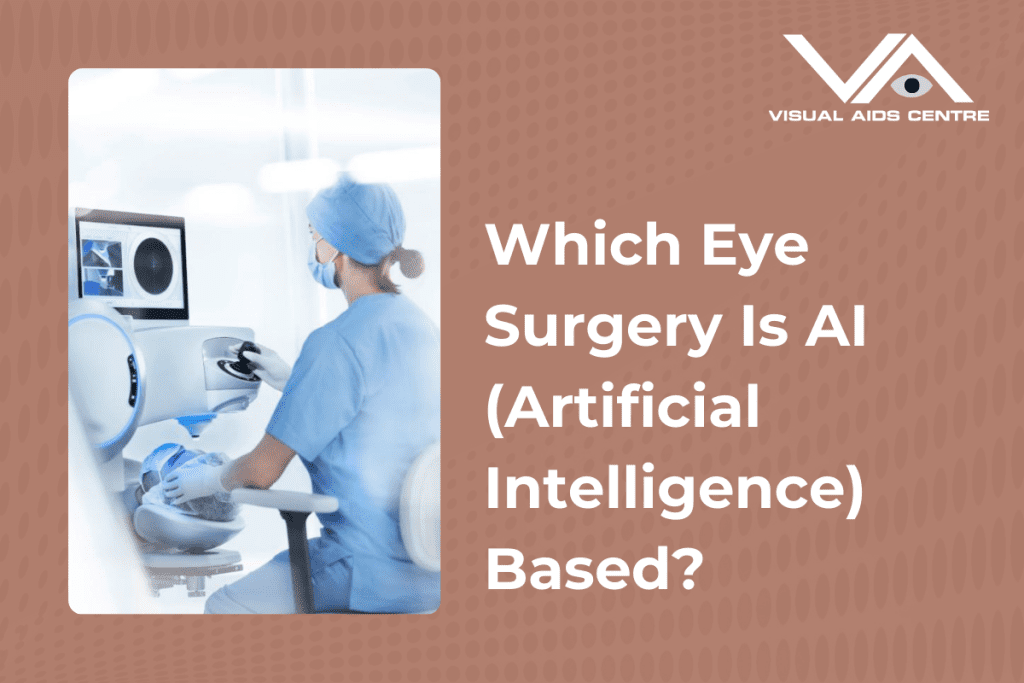Table of Contents
Toggle“Artificial Intelligence: Revolutionising Eye Surgery”
Explore how AI is transforming the landscape of eye surgery, ushering in an era of precision, accuracy, and improved outcomes.
AI-based technology is being incorporated into several branches of eye surgery, with Cataract surgery being one of the key application areas. For instance, the use of AI in creating three-dimensional, high-resolution images of the eye immensely aids in the planning and execution of cataract surgeries. These images provide surgeons with precise details about the eye’s structure, enabling them to make more accurate incisions and effectively remove the cataract. Moreover, AI systems can predict the ideal intraocular lens power for each patient, enhancing the chances of optimal visual outcomes post-surgery. Hence, AI’s incorporation in cataract surgery is revolutionizing the field by ensuring more precise and personalized treatments.

What is AI-based eye surgery?
AI-based eye surgery entails using Artificial Intelligence technologies to perform and enhance ocular surgical procedures.
The application of AI in eye surgery has led to increased precision and accuracy, ensuring improved surgical outcomes.
AI’s role in high-resolution imaging enables detailed three-dimensional views of the ocular structure, aiding in the planning and execution of surgeries.
AI is critical in personalizing surgeries, such as predicting the ideal intraocular lens power for cataract patients and optimizing visual outcomes.
AI systems facilitate better decision-making in surgery by analyzing past data to predict potential complications and outcomes.
The introduction of robotic surgery, driven by AI, allows for minimally invasive procedures, thus reducing recovery time and risk of infection.
AI-based surgery is a promising field with immense potential, providing the opportunity to harness technology in diagnosing and treating even complex eye conditions.
How does AI work in Eye Surgery?
Data Analysis and Machine Learning:
AI utilizes large volumes of pre-existing patient data to learn patterns and make conclusions. For example, it can analyze data from past surgeries to predict potential complications and outcomes.
High-Resolution Imaging:
AI has introduced advanced imaging technologies in ocular surgery, such as obtaining detailed 3-D images of the eye, which provide vital information for surgical planning.
Automated Decision-Making:
AI can make automated decisions during surgery, such as adjusting the laser’s power or position based on real-time data, ensuring enhanced precision and accuracy.
Robotic Assistance:
With AI, robots can perform certain parts of the surgical procedure, ensuring precision even in highly delicate tasks. This leads to minimally invasive procedures with reduced recovery time and infection risk.
Personalized Treatment:
By analyzing individual patient data, AI can predict the ideal intraocular lens power for each patient, which is crucial for optimal visual outcomes in cataract surgery.
Risk Prediction:
AI can predict potential surgical risks based on pre-surgery data. This helps surgeons to take precautionary measures and enhance patient safety.
Continuous Learning:
AI continuously learns from each surgery, thus augmenting its data set and improving future surgical outcomes. This leads to constant evolution and betterment of surgical procedures.
Benefits and Challenges of AI-Based Eye Surgery
Precision and Accuracy:
AI technologies ensure precision and accuracy, significantly reducing the chance of human error and enhancing surgical outcomes.
Personalized Treatment: Based on individual patient data, AI predicts each patient’s ideal intraocular lens power, optimizing visual outcomes in cataract surgery.
Risk Mitigation:
AI’s ability to foresee potential risks helps surgeons take preventive measures, enhancing patient safety.
Minimally Invasive Procedures: Robotic surgeries driven by AI allow for minimally invasive procedures, reducing recovery time and the risk of infection.
Continuous Improvement:
AI learns from each executed surgery, constantly updating its dataset to improve future surgical outcomes.
Challenges of AI-Based Eye Surgery
Data Privacy:
AI involves handling vast amounts of patient data, raising concerns about data privacy and security.
High Costs:
Incorporating AI and robotic technology into surgical procedures can significantly increase the costs of surgeries.
Technological Dependence:
Over-reliance on AI can reduce surgeons’ hands-on skills over time, which is problematic when AI is unavailable.
Ethical Concerns:
The autonomous decision-making capability of AI raises ethical considerations, especially in situations with unexpected surgical complications.
Regulatory Hurdles:
The regulation of AI in healthcare is still in its nascent stages, creating potential hurdles in its adoption and implementation.
Which Ocular Procedures Utilize AI (Artificial Intelligence)?
AI-based technology is currently being incorporated across several branches of eye surgery, and here are some key areas:
Cataract Surgery:
AI aids in the planning and execution of cataract surgeries by producing three-dimensional, high-resolution images of the eye. The technology also assists in predicting the ideal intraocular lens power for each patient, ensuring optimal visual outcomes.
Refractive Surgery:
AI plays a significant role in refractive surgeries like LASIK by analyzing patient data to predict the best surgical approach and potential outcomes.
Vitreo-retinal Surgery:
AI can assist in complex procedures like vitreo-retinal surgery, providing detailed imaging and data analysis to guide surgical decisions and improve outcomes.
Glaucoma Surgery:
AI technologies assist in predicting surgical success rates and potential complications in glaucoma surgeries, thereby aiding in personalized treatment planning.
Strabismus Surgery:
In surgeries for strabismus (misalignment of eyes), AI helps analyze various factors to predict surgical outcomes and aid in treatment planning.
Despite its relatively recent introduction, AI-based technology is revolutionizing eye surgery by improving accuracy, personalizing treatments, and reducing risks. Its potential is vast, promising a future where even the most complex eye conditions can be effectively diagnosed and treated.













